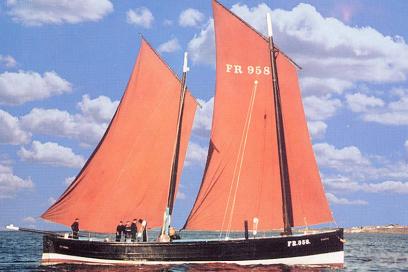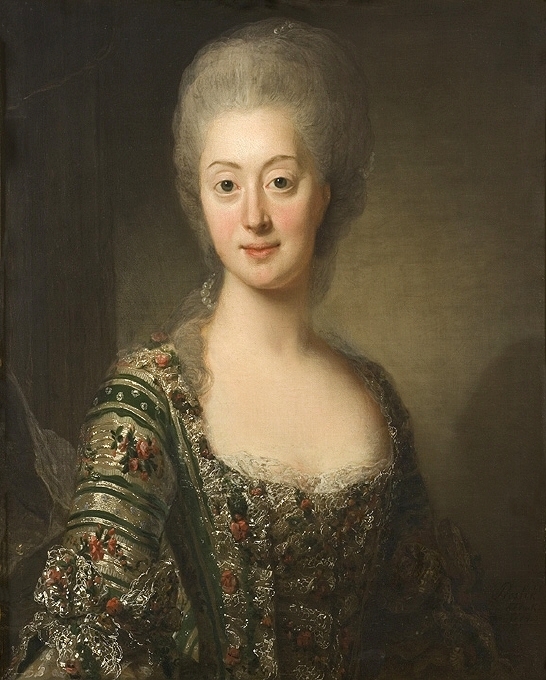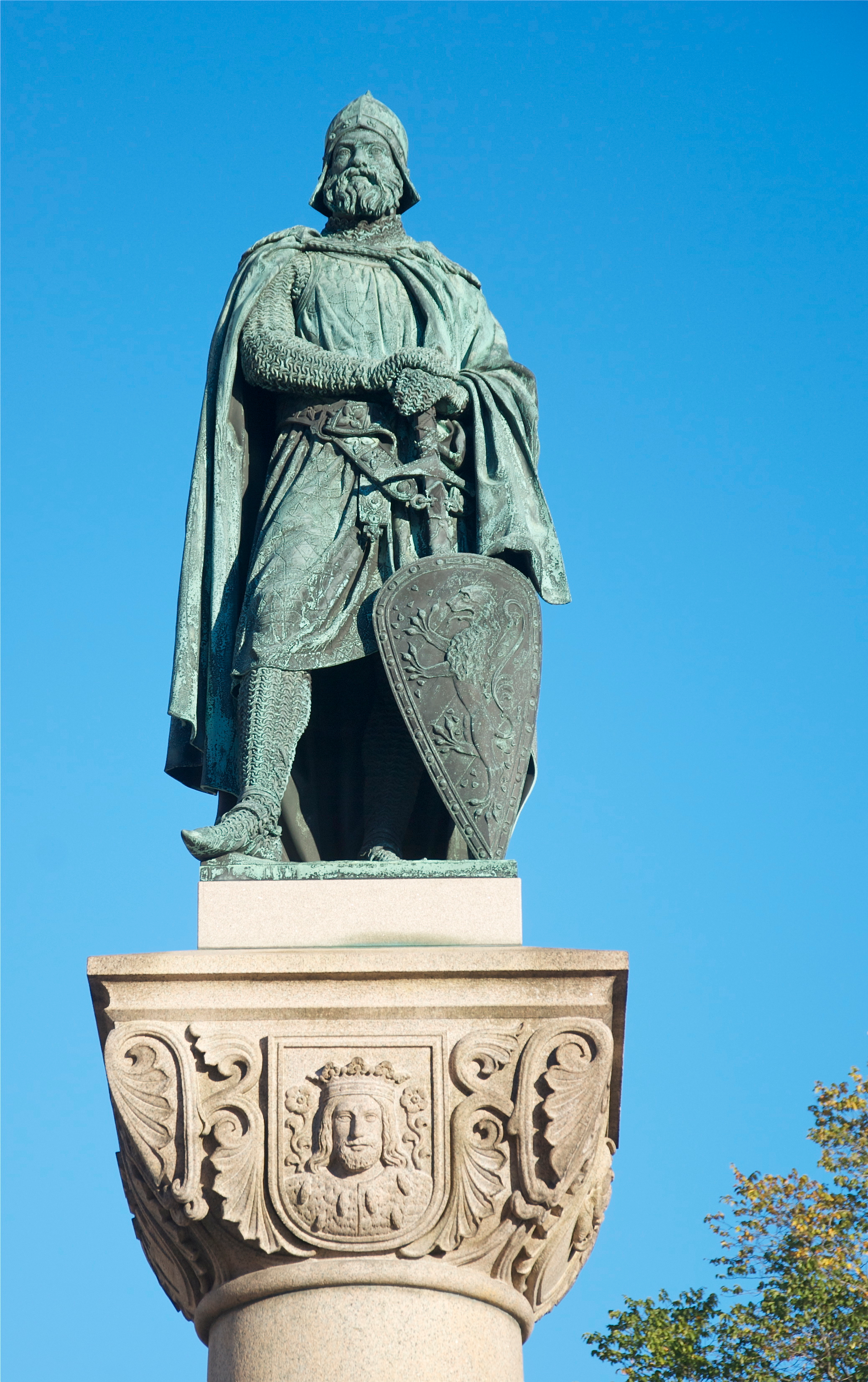|
Anna Elisabeth Baer
Anna Elisabeth Baer née Carlbohm (1722–1799) was a Finnish merchant and shipowner. She was one of the richest merchants in the latter half of the 18th century in Turku, Finland. Life Anna Elisabeth Baer was the daughter of the rich merchant and city councillor Kristoffer Carlbohm and Anna Warg of Gamla Karleby. In 1743, she married the wealthy merchant Anders Baer (1712–1770) of Turku, who was also an elected representative to the Swedish parliament. The couple had thirteen children, seven of whom became adults. Business career She took over the family business (as well as her husband's guild membership) after his death in 1770, and managed it for nearly thirty years after his death. She sent several petitions relating to business to the Swedish Collegium of Commerce. She was a shipowner, owned a merchant company and several properties outside of Turku, as well as parts of a brick factory, a saw mill and a tobacco factory. From 1770 until 1777, she managed the Turku ci ... [...More Info...] [...Related Items...] OR: [Wikipedia] [Google] [Baidu] |
Merchant
A merchant is a person who trades in goods produced by other people, especially one who trades with foreign countries. Merchants have been known for as long as humans have engaged in trade and commerce. Merchants and merchant networks operated in ancient Babylonia, Assyria, China, Egypt, Greece, India, Persia, Phoenicia and Rome. During the European medieval period, a rapid expansion in trade and commerce led to the rise of a wealthy and powerful merchant class. The European Age of Discovery opened up new trading routes and gave European consumers access to a much broader range of goods. By the 18th century, a new type of manufacturer-merchant had started to emerge and modern business practices were becoming evident. The status of the merchant has varied during different periods of history and among different societies. In modern times, the term ''merchant'' has occasionally been used to refer to a businessperson or someone undertaking activities (commercial or industrial) for ... [...More Info...] [...Related Items...] OR: [Wikipedia] [Google] [Baidu] |
Turku
Turku ( ; ; , ) is a city in Finland and the regional capital of Southwest Finland. It is located on the southwestern coast of the country at the mouth of the Aura River (Finland), River Aura. The population of Turku is approximately , while the Turku metropolitan area, metropolitan area has a population of approximately . It is the most populous Municipalities of Finland, municipality in Finland, and the third most populous List of urban areas in Finland by population, urban area in the country after Helsinki metropolitan area, Helsinki and Tampere metropolitan area, Tampere. Turku is Finland's oldest city. It is not known when Turku was granted city status. Pope Pope Gregory IX, Gregory IX first mentioned the town of ''Aboa'' in his ''Bulla'' in 1229, and this year is now used as the founding year of the city. Turku was the most important city in the eastern part of the Sweden, Kingdom of Sweden (today's Finland). After the Finnish War, Finland became an Grand Duchy of Finla ... [...More Info...] [...Related Items...] OR: [Wikipedia] [Google] [Baidu] |
Gamla Karleby
Kokkola (; , ) is a town in Finland and the regional capital of Central Ostrobothnia. It is located on the west coast of the country, on the Gulf of Bothnia. The population of Kokkola is approximately , while the sub-region has a population of approximately . It is the most populous municipality in Finland, and the 20th most populous urban area in the country. Kokkola covers an area of of which is water. The population density is . Neighbour municipalities are Halsua, Kalajoki, Kannus, Kaustinen, Kronoby, Lestijärvi, Larsmo and Toholampi. Kokkola is a bilingual municipality with Finnish language, Finnish and Swedish language, Swedish as its official languages. The population consists of Finnish speakers, Swedish speakers, and speakers of other languages. Etymology Name In the oldest Swedish sources Kokkola is mentioned as ''Karlabi''. The town was known in Swedish by the name until 1 January 1977 when the surrounding land municipality of Kaarlela () was consolidated wi ... [...More Info...] [...Related Items...] OR: [Wikipedia] [Google] [Baidu] |
Elisabeth Wittfooth
Elisabet Wittfooth née Tottie (1716, Stockholm - 1791, Åbo ()) was a Finnish merchant and shipowner. Personal life Elisabet Wittfooth was the daughter of tobacco factory owner Thomas Tottie (d. 1724) and Christina Schönman in Stockholm. She moved to Åbo in Finland after her marriage in 1737 to the Finnish merchant shipowner Gustaf Adolf Wittfooth (d. 1758). The couple had three sons, Arvid, Adam and Thomas. Career She managed the Wittfooth Trading Company, which was that time was one of the biggest in Finland, from the death of her husband in 1758 until her own death. She managed import and export and owned seven ships and two factories, a sugar factory and a tobacco factory, which she founded in 1763. It was the second tobacco factory in Åbo, and the first to be successful. From 1758 to 1777 she managed the city hall restaurant of Åbo, the ''Stadskällaren'', (for the last seven years in partnership with Anna Elisabeth Baer): she stopped managing it in 1777, but owne ... [...More Info...] [...Related Items...] OR: [Wikipedia] [Google] [Baidu] |
Theatre War
The Theatre War (), Cowberry War, Cranberry War or Lingonberry War (, ), was a brief war between Denmark–Norway and Sweden, starting on 24 September 1788, formally lasting until 9 July 1789. Although the decision to launch the attack was taken in Denmark, the majority of the attacking soldiers were Norwegians from the Norwegian army. The attack was directed towards the region known as Bohuslän in Sweden, and was supposed to act as a diversion to relieve Russia, who was an ally of Denmark–Norway and had recently been attacked by Sweden (Gustav III's Russian War). This forced Denmark–Norway to honour their alliance between the two states that had been signed in 1773. Background When Gustav III of Sweden on his own initiative, and unconstitutionally, attacked Russia in 1788 and thereby started the Russo-Swedish War of 1788–90, Denmark-Norway found itself in an awkward position. In the 1773 Treaty of Tsarskoye Selo, Denmark–Norway had committed itself to assist with 1 ... [...More Info...] [...Related Items...] OR: [Wikipedia] [Google] [Baidu] |
Lugger
A lugger is a sailing vessel defined by its rig, using the lug sail on all of its one or more masts. Luggers were widely used as working craft, particularly off the coasts of France, England, Ireland and Scotland. Luggers varied extensively in size and design. Many were undecked, open boats, some of which operated from beach landings (such as Hastings or Deal). Others were fully decked craft (typified by the Zulu and many other sailing drifters). Some larger examples might carry lug topsails. History A lugger is usually a two- or three-masted vessel, setting lug sails on each mast. A jib or staysail may be set on some luggers. More rarely, lug topsails are used by some luggers — notably the chasse-marée. A lug sail is an asymmetric quadrilateral sail that fastens to a yard (spar) along the head (top edge) of the sail. The yard is held to the mast either by a parrel or by a traveller (consisting of a metal ring that goes round the mast and has an eye for the halyard an ... [...More Info...] [...Related Items...] OR: [Wikipedia] [Google] [Baidu] |
Gustav III Of Sweden
Gustav III (29 March 1792), also called ''Gustavus III'', was King of Sweden from 1771 until his assassination in 1792. He was the eldest son of King Adolf Frederick and Queen Louisa Ulrika of Sweden. Gustav was a vocal opponent of what he saw as the abuse of political privileges seized by the nobility since the death of King Charles XII in the Great Northern War. Seizing power from the government in a coup d'état, called the Swedish Revolution, in 1772, that ended the Age of Liberty, he initiated a campaign to restore a measure of royal autocracy. This was completed by the Union and Security Act of 1789, which swept away most of the powers exercised by the Swedish Riksdag of the estates during the Age of Liberty, but at the same time it opened up the government for all citizens, thereby breaking the privileges of the nobility. A believer in enlightened absolutism, Gustav spent considerable public funds on cultural ventures, which were controversial among his critics, as ... [...More Info...] [...Related Items...] OR: [Wikipedia] [Google] [Baidu] |
Riksdag
The Riksdag ( , ; also or , ) is the parliament and the parliamentary sovereignty, supreme decision-making body of the Kingdom of Sweden. Since 1971, the Riksdag has been a unicameral parliament with 349 members (), elected proportional representation, proportionally and serving, since 1994, fixed four-year terms. The 2022 Swedish general election is the most recent general election. The constitutional mandates of the Riksdag are enumerated in the ''Basic Laws of Sweden#Instrument of Government, Instrument of Government'' (), and its internal workings are specified in greater detail in the Riksdag Act ().Instrument of Government as of 2012. Retrieved on 16 November 2012. [...More Info...] [...Related Items...] OR: [Wikipedia] [Google] [Baidu] |
Finland Under Swedish Rule
Finland was an integral part of Sweden from the Middle Ages until 1809. The starting point of Swedish rule is uncertain and controversial. It is traditionally linked to the First Swedish Crusade in the mid-12th century. Historical evidence of the establishment of Swedish rule in Finland exists from the middle of the 13th century onwards. Swedish rule ended in 1721 in most of so-called Old Finland, the south-eastern part of the Finnish territories, as a result of the Great Northern War. Sweden ceded the remainder of Old Finland in 1743, following the Russo-Swedish War (1741–43), Hats' War. Swedish rule over the rest of Finland ended on 17 September 1809, when the signing of the Treaty of Fredrikshamn, Treaty of Hamina ended the Finnish War. As a result, the eastern third of Sweden was ceded to the Russian Empire and became established as the autonomous Grand Duchy of Finland. Swedish rule in the area of modern-day Finland started as a result of the Northern Crusades. The Fin ... [...More Info...] [...Related Items...] OR: [Wikipedia] [Google] [Baidu] |
Revolution Of 1772
The Revolution of 1772, also known as The Bloodless Revolution () or the Coup of Gustav III ( or older ''Gustav III:s statsvälvning''), was a Swedish coup d'état performed by King Gustav III of Sweden on 19 August 1772 to introduce a division of power between the king and the Riksdag of the Estates, resulting in the end of the Age of Liberty and the introduction of the Swedish Constitution of 1772, which would strengthen the power of the monarch and the start the absolutist period known as the Gustavian era. Background The Age of Liberty was a period in Swedish history that spanned from 1718 to 1772, during which the Riksdag of the Estates held significant power and limited the authority of the monarch. This period saw the introduction of various reforms, including freedom of the press and the abolition of torture. Before the revolution, Sweden had been governed by a constitutionalist system as a result of an increase in the power of the Riksdag of the Estates due to the ... [...More Info...] [...Related Items...] OR: [Wikipedia] [Google] [Baidu] |
Age Of Liberty
In Swedish history, the Age of Liberty () was a period that saw parliamentary governance, increasing civil rights, and the decline of the Swedish Empire that began with the adoption of the Instrument of Government in 1719 and ended with Gustav III's self-coup in 1772. This shift of power from the monarch to parliament was a direct effect of the Great Northern War. Suffrage under the parliamentary government was not universal. Although the taxed peasantry was represented in the Parliament, its influence was disproportionately small, and commoners without taxed property had no suffrage at all. Great Northern War Following the death of Charles XI of Sweden, his young son Charles XII became king, and in 1697, when he was only 15 years old, he was proclaimed to be of age and took over the rule from the provisional government. The states in which Sweden's expansion into a great power had primarily been at the expense of Denmark and Russia, formed a coalition with Saxony two ... [...More Info...] [...Related Items...] OR: [Wikipedia] [Google] [Baidu] |
1722 Births
Events January–March * January 27 – Daniel Defoe's novel ''Moll Flanders'' is published anonymously in London. * February 10 – The Battle of Cape Lopez begins off of the coast of West Africa (and present-day Gabon), as the Royal Navy brings an end to the piracy of Bartholomew Roberts, nicknamed "Black Bart". Captained by Chaloner Ogle of the Royal Navy, HMS Swallow (1703), HMS ''Swallow'' fires its cannons as Roberts sails his ship ''Royal Fortune'' toward the oncoming ''Swallow'' in order to gain time by forcing ''Swallow'' to turn around. Standing on the deck, Roberts and two of his crew are killed by the second wave of cannon fire. The remaining 272 pirate crew are captured. * February 16 – Peter the Great, Emperor of All Russia, announces that his heir to the throne will be his 4-year old grandson, Peter II of Russia, Prince Pyotr Alekseivich. * February 21 – Muhammad Shah, Nasir-ud-Din Muḥammad Shah, the Grand Mogul of north Indi ... [...More Info...] [...Related Items...] OR: [Wikipedia] [Google] [Baidu] |






